Phone is combined with a photographic mobile phone

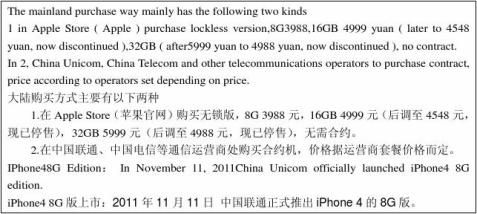

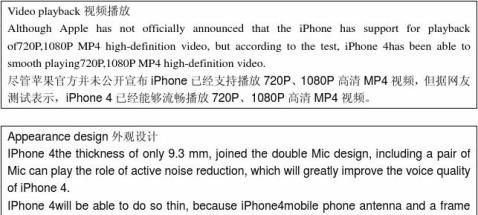
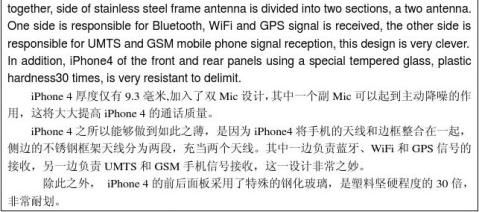
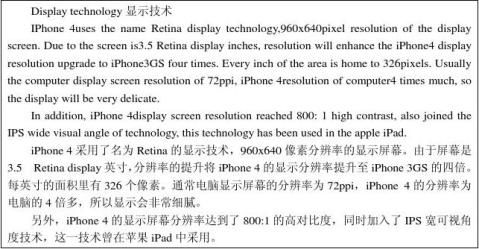
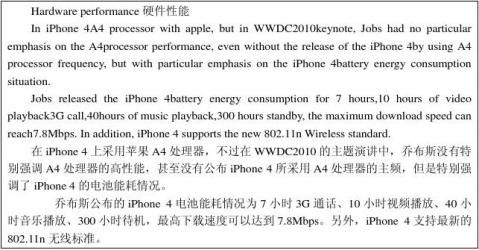

第二篇:Is Learning Really a Phone Call Away Knowledge Transfer in Mobile Learning
Is Learning Really a Phone Call Away? Knowledge Transfer in Mobile Learning
Allan Knight, Monica Bulger, Kevin Almeroth
University of California, Santa Barbara
Knowledge Transfer in Mobile Learning 1
Abstract
Mobile learning can positively contribute to the development of learning communities by providing communication options that span contexts and locations, are available whenever, and are used virtually everywhere (Alexander, 2004; Sharples, Taylor &
Vavoula, 2005). At UC Santa Barbara, we are currently conducting a campus-wide study that examines whether students’ use of technology, both within and beyond the
classroom, correlates with academic performance. While we primarily concentrate on the use of course websites accessed with non-mobile devices, we have begun to use a
Performance-Based Feedback System (PBFS) to explore (1) how to extend the instructor-student feedback loop beyond the traditional classroom setting, (2) how knowledge transfer can be accomplished using mobile devices, and (3) what technical challenges must be overcome. In this paper, we examine ways that mobile networking technologies can foster the creation of learning communities and provide new methods for studying knowledge transfer.
1
Knowledge Transfer in Mobile Learning 2
Is Learning Really a Phone Call Away? Knowledge Transfer in Mobile Learning For over a decade, instructors and educational researchers have identified the necessity of creating learning communities both within and beyond their classrooms (Flower, 1989; Gee & Green, 1998; Lave & Wenger, 1991). Ideally, learning
communities promote deeper understanding of the classroom material through discussion and experiential activities. As with other areas of education, the challenge in developing these groups lies in fostering authentic activities that empower members to actively formulate and communicate their understanding of the materials. Emerging classroom technologies enhance the development of these learning communities by extending interaction beyond the classroom (Knight, Almeroth, & Bimber, 2006).
While the traditional model of knowledge transfer considers only instructor-
student or text-student interactions, the social-constructivist approach offers a more flexible model conducive to mobile learning: peers learn from each other and through their interactions with resources across multiple modes and contexts (Mayer, 2001;
Jonassen, 1996; Jonassen, Peck, & Wilson, 1999; Sharples, Taylor & Vavoula, 2005). To study knowledge transfer, then, we must examine the visible interactions between students, instructors, and resources as well as the meta-knowledge transfer that occurs between mobile devices and learning management systems.
In this paper, we use a Performance-Based Feedback System (PBFS) to examine how knowledge is shared, accessed, and revised among student learning groups in face-to-face learning environments as well as in distance-learning scenarios. We propose
extending this model to mobile learning studies by first determining whether students are interacting using mobile devices and then developing a method for assessing this 2
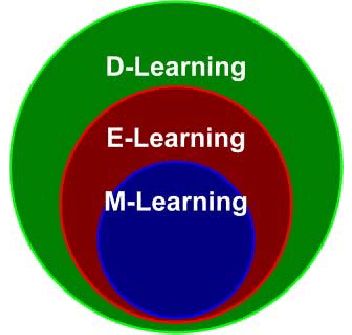

Knowledge Transfer in Mobile Learning 3
Figure 1. Popular perspective of learning
techniques Figure 2. The MLearn Community Perspective
interaction. Mobile learning devices present a major technical challenge because they are not always connected; however, by leveraging existing mobile technologies such as ???, data such as what types of technologies students use in educational settings and when they use them can be collected. Once this data is collected and analyzed, we can build an understanding of how students use mobile devices and then tailor lessons to support and enhance this use. By integrating content development with data collection, we thus create a reflexive feedback model in which we identify, develop, test and refine pedagogically sound methods of using mobile technologies.
Understanding the ways students interact with technologies in learning contexts is a key first step to integrating mobile content and technologies in educational settings. To contribute to the ongoing assessment of mobile learning, we propose a methodology that uses a PBFS to study mobile learners and their mobile devices.
3
Knowledge Transfer in Mobile Learning 4 Place
Time
Effo
Figure 3. Our perspective of learning techniques
Perspectives on M-Learning
First, the popular misconception that the relationship between m-learning and both d-learning and e-learning is best expressed in terms of set theory. In this perspective d-learning is viewed as super set of all three paradigms with e-learning being a proper subset of d-learning. In other words, all instances of e-learning are also instances of d-learning. Similarly, m-learning is a proper subset of d-learning, and therefore all
instances of m-learning are also instances of e-learning. Figure 1 illustrates this popular idea of their relationship. The MLearn community, however, takes a slightly different view of these relationships. Rather than viewing them as proper subset, the community correctly views them as three overlapping sets. In this view none of the sets are a proper subset of each other, but each set does slightly intersect with each other set. Figure 2 illustrates this perspective.
4
Knowledge Transfer in Mobile Learning 5
We, however, take a different approach to categorizing teaching techniques.
Rather than arbitrarily assigning each technique to d-learning, e-learning or m-learning, we look at teaching practices in general in terms of 3 axes as shown in figure 2. The first access represents place. Locations at the origin represent learning that takes place with no spatial displacement from the classroom. Moving further up the axis represents larger and larger spatial displacement and therefore learning taking place further from the traditional classroom. The second axis represents temporal displacement. Here, the origin represents no temporal displacement from a fixed class meeting time. Locations further from the origin represent temporal shifts from the agreed upon class meeting time. By varying different learning experiences along both these axes, instructors can provide learning experiences at a greater number of times and places. All three of the learning paradigms, d-learning, e-learning and m-learning, are really achieved by varying the learning experience along these axes. The advantage of this organization is that it avoids the natural arguments that result from trying to classify specific teaching techniques. Is a book really an m-learning device? Is a PDA in the classroom really m-learning? With the popular view, and even the research view of learning, these questions are not easily answered and open to much debate. However, by using the axes to organize teaching techniques, the only concern is how much time and space are shifted for a particular learning experience. Finally, the third axis in Figure 2 represents effort. This axis measures how much effort is required to achieve a learning outcome by both the
instructor and the student. In some cases the amount of effort required to implement a specific learning technique is not worth the benefits gained. Other techniques may require a small amount of effort in the beginning that results in less effort on the part of the 5
Knowledge Transfer in Mobile Learning 6
instructor or the student. The goal of the Course Management System (CMS) is an example of the instructor exerting an initial effort that results in less effort required by students and instructors to gain access to course material.
Currently, most courses are taught using techniques that fall in a variety of
locations on these axes. Some teaching is done in the traditional classroom at a fixed time, which would appear at the origin of both the temporal and spatial axes. Other tasks may be done outside the classroom at any given time before a deadline. The goal then as educational and technology researchers is to find the position on these axes that maximizes the outcomes for students and instructors.
Related Work
In the following we describe three architectures created specifically for mobile learning environments. These pieces of research, while not exhaustive, represent the
central themes of m-learning architectures. Each of the architectures contains modules for content management, presentation management and context awareness. Content management is the management of the learning objects themselves and provides for access to the various formats of the objects to the students. A pre-existing CMS from an e-learning environment generally provides this functionality. Presentation management refers to the modification of learning objects based on what device the object is accessed. Finally, context awareness refers to how, when and where an access of a particular
learning object occurs. Context awareness, discussed in greater detail later in this paper, is the main focus of our research. Again, however, our work is not architecture, but rather a suggestion of an addition to all architectures especially in how they act upon their context awareness.
6
Knowledge Transfer in Mobile Learning 7
We first present Mobile Learning Management System (m-LMS) (Trafinova, & Ronchetti, 2004). The m-LMS provides the aforementioned modules as “Context Discovery”, “Mobile Content Management and Presentation Adaptation”, and
“Packaging and Synchronization”. The m-LMS architecture is in reality an adaptation of an e-LMS to support m-learning. The e-LMS still handles the management of learning objects, however, in order to display these object properly the mobile device receives a modified version. In addition, the context discovery module helps to transmit the proper learning object to the mobile device based on the current context. The m-LMS
architecture is similar to our work in that it seeks to guide students towards downloading the most appropriate material. The m-LMS architecture does not, however, inform the students of the importance of certain learning objects. Instead it merely downloads the most important learning objects to the mobile device.
Porta-bile(Colazzo, Molinari, Conchetti, & Trifonova, 2004) is the second
architecture presented here and is similar in focus to the m-LMS project above. The focus is, again, the transformation of a learning management system primarily used for e-learning into an m-learning architecture. By building a web application on top of a pre-existing LMS using web services, their e-LMS is transformed into an m-LMS.
Finally, we present the architecture called Open Mobile Access Abstract
Framework (OMAF) (Lonsdale, Baber, & Sharples, 2003). The work is part of a greater effort, called MOBIlearn, to observe the practicalities and effectiveness of mobile learning in general. This work presents a layered approach to m-learning architectures. The main difference between this work and the others mentioned above is that OMAF 7
Knowledge Transfer in Mobile Learning 8
represents an overall abstraction of how to design mobile learning environments, rather than actual architectures.
While all the above research has a common goal, which we share with them, of measuring the effectiveness of various mobile learning technologies, we believe there are two main deficiencies. First, with the exception of MOBIlearn, these research projects treat mobile learning as a proper subset of e-learning. We, believe that there exists m-learning opportunities that do not exist in e-learning. The second problem with these projects is their idea of context. For each, context refers to the temporal, spatial and hardware contexts. Our work would prefer to extend the idea of context to include the performance of the student using a particular device and the performance of others with respect to a particular learning object. By extending the context to include performance, we believe that the mobile learning experience can be enhanced further to allow the students to more likely access the learning objects that have a greater impact on their performance.
8

Knowledge Transfer in Mobile Learning 9
Figure 4. Screen capture of the Moodle extension MooDog. The red and green bars convey access information about learning objects.
Performance-Based Feedback Systems
The goal of our research with Performance-Based Feedback Systems (PBFS) is to
introduce the feedback loop, much like that from a traditional classroom, into the d-
learning, e-learning and m-learning environments. For example, if a student has not yet read a homework assignment that is due in the near future, the PBFS, as currently
constructed, would e-mail the student a reminder that the assignment is due and that they need to read and start the assignment. While this scenario is currently possible with
9
Knowledge Transfer in Mobile Learning 10
current most CMSs, the time required to achieve such feedback is prohibitive. Analyzing the logging information of the Course Management System associated with a particular course make these scenarios possible. The hope is that by ‘reminding’ those students who have not kept up with the material and by keeping the instructor informed about these students, the overall performance of the students is improved. We have already begun to build and use such a system for Moodle. The MooDog extension for Moodle provides feedback to both student and instructors regarding how often learning objects have been accessed. Figure 4 above is a screen shot of MooDog.
The word “Performance” as used in our work has several implications. Primarily, the word refers to our goal of improving overall academic performance. Secondarily, “Performance” refers to the fact that performance of past and present students in a given course can be used to determine which learning objects are important to a course and what sort of interactions students have with these objects. Going back to the homework assignment example, it may be important to know how long before an assignment is due should a student begin, or at least read, an assignment. More importantly, does this time gap matter in the overall performance on that particular assignment.
To implement a PBFS requires three actions: Collection, Analysis and
Presentation. The collection action has two distinct sources, the CMS system, which keeps track of learning object accesses and student information. The student information is necessary at this point to help us understand what factors truly impact their educational experience. This data allows us to differentiate between true enhancement of the learning experience and difference in Performance-Based on other background information such socio-economic status. The analysis actions use both types of information. Analysis 10
Knowledge Transfer in Mobile Learning 11
refers to the actual manipulation of data to determine an action for the PBFS. For
example, if the PBFS observes that a particular student has not accessed a learning object associated with an upcoming assignment. The PBFS may then decide to inform that student that the assignment deadline is approaching and accessing the learning object may greatly affect the student’s performance on that assignment. Analysis is also currently ongoing to determine the exact importance of viewing different types of learning objects. This analysis seeks to determine such metrics as how long before an assignment is due should a student read the assignment and presumably begin work on it to maximize performance. Similarly, this analysis seeks to determine which types of learning objects are the most effective. Are PowerPoint slides more important the student forums? Or is the opposite true? Finally, the presentation action notifies both the students and the instructors about accesses statistics of learning objects. The forms of these
presentations can be e-mails in the case of students, and web pages with viewing statistics for both students and instructors. Figure 3 illustrates MooDog’s presentation of access information for instructor use.
Performance-Based Feedback Systems in an M-Learning Environment
At the present time, our work primarily concentrates on e-learning environments. Recently, however, we have begun to look at how our work can complement m-learning environments. In looking at this new area, we realized integration into an m-learning environment would also enhance a PBFS. A PBFS in an m-learning environment creates more opportunities for collecting data. Better data collection is possible because mobile devices tend to be more application specific. For example, trying to surmise how much time students actually spend reading the content provided on a course website is difficult 11
Knowledge Transfer in Mobile Learning 12
to measure accurately, especially when viewed on a PC. Measuring time spent interacting learning objects on a PC is problematic in e-learning environments because PCs are capable of running several applications at once. On mobile devices such as PDAs or cell phones, which are less multipurpose, the possibility exists to more accurately collect data on learning object usage. This aspect of m-learning environments is, in our view, an important enhancement to the collection and analysis of performance data that will lead to even better measurements for the feedback system.
M-Learning with Performance-Based Feedback Systems
Most m-learning environments that we have read about involve some form of context awareness. The content, in the form of learning objects, is in someway modified, and/or selected, based on the temporal and spatial positions of the user and the hardware restrictions of the mobile device in use. The context of a request from a mobile device is the combination of these three characteristics, and maybe some others. One dimension of context missing, however, is what observed behaviors are associated with a particular learning object. For example, when, if at all, did the student access a learning object. This information is very important when selecting which objects to upload to a mobile device. Proper selection of learning objects for transmission to a mobile device is important because mobile devices are, by definition, limited in their resources. For example, in a situation similar to that given in Porta-bile, where a student is at the library around the deadline of an assignment, an m-learning environment may decide to transmit learning objects related to a talk at the library, but not inform the student of the impending deadline for an assignment. If the student has already viewed and/or submitted the
assignment, then the original choices seem appropriate. If, however, the student has not 12
Knowledge Transfer in Mobile Learning 13
then the choice may not be optimal. This example is one of many where including student interactions with learning objects can result in better selection of materials to upload to the mobile device.
How then is the information necessary for proper feedback collected? If the
mobile device is connected, traditional collection methods are appropriate. The CMS collects the requests and records them in a log. If, however, the mobile device lacks connectivity, then the data must be collected locally on the mobile device and forwarded to a central collection server in the future. This collection of data poses the main technological challenge for combining m-learning and a PBFS.
There exist several techniques for overcoming this challenge. If time is not
important, then the collection server can download the information upon the next connection. If, however, time is important then other technologies may be necessary, such as those employed by delay tolerant networks, or by simply notifying the user that connectivity is required at the soonest possible time. Also important and of concern is when data collected offline consumes the limited resources of a mobile device. If
connectivity does not occur in a timely manner, the data collected may accumulate to the point of using all available resources on the mobile device. By eliminating some
information in the data collection, perhaps the oldest or least important, the mobile device can avoid consuming the limited resources available to it and upload the remaining information when connectivity becomes available.
Summary and Conclusion
In this paper we have discussed both Performance Feedback System (PBFS) and m-learning both as independent entities and when used in conjunction with each other. A 13
Knowledge Transfer in Mobile Learning 14
PBFS is a powerful tool to help students improve their performance in a class. Similarly, m-learning is an important tool for both improving the learning experience in traditional classrooms and making learning possible where it was not before. Their combination, however, enhances both. Allowing a PBFS more opportunities to collect usage data and with greater detail will help it make better choices about which objects to notify students and instructors about. M-learning, too, can benefit from incorporation of a PBFS. The additional dimension that a PBFS adds to context awareness will greatly improve the decision making process for any m-learning architecture. For the future, the combination of these two concepts will allow for better measurement of performance in class and a better experience in general.
14
Knowledge Transfer in Mobile Learning 15
References
Alexander, B. (2004). Going nomadic: Mobile learning in higher education. Educause,
29-35.
Colazzo, L., Molinari, A., Conchetti, M., Trifonova, A. Towards a Multi-Vendor Mobile
Learning Management System. Proceedings of 2004 World Conference on E-Learning in Corporate, Government, Healthcare, and Higher Education
(ELEARN), Phoenix
Da Bormida, G., Bo, G., Lefrere, P., Taylor, J. An Open Abstract Framework for
Modeling Interoperability of Mobile Learning Services. Proceedings of MLearn 2004 Conference, Rome
Flower, L. (1989). Cognition, context, and theory building. College Composition and
Communication, 40, 282-311.
Gee, J.P. & Green, J.L. (1998). Discourse analysis, learning, and social practice: A
methodological study. Review of Research in Education, 23, 119-169.
Jonassen, D. H. (Ed.) (1996). Handbook of research for educational communications
and Technology. New York: Macmillan
Jonassen, D.H. Peck, K.L., & Wilson, B.G. (1999). Learning with technology: A
constructivist perspective. Upper Saddle River, NJ: Prentice Hall.
Knight, A., Almeroth, K. and Bimber, B. Observations and recommendations for
using technology to extend interaction. Proceedings of 2006 World Conference on Educational Multimedia, Hypermedia & Telecommunications (ED MEDIA), Orlando.
Lonsdale, P., Baber, C., and Sharples, M. A context awareness architecture for
facilitating mobile learning. Proceedings of MLearn 2003 Conference, London Lave, J. & Wenger, E. (1991). Situated Learning: Legitimate Peripheral Participation.
Cambridge: Cambridge University Press.
Mayer, R. E. (2001). Multimedia learning. New York: Cambridge University Press. Sharples, M., Taylor, J., Vavoula, G. (2005). Towards a theory of mobile learning.
Proceedings of MLearn 2005 conference, Cape Town.
Trafinova, A., & Ronchetti, M. A General Architecture to Support Mobility in Learning.
Proceedings of the 2004 IEEE International Conference on Advanced Learning Technologies (ICALT), Joensuu, Finland
15
-
The cop and the anthem鉴赏
AbouttheauthorOhenryoriginallynamedWilliamSydneyPorterwhoisoneoffamousshort…
-
The Cop and the Anthem读后感
NowheretoStayTheCopandtheAnthemisoneofOHenrysrepresentativeworksThisnovelde…
-
The Cop and the Anthem警察与赞美诗读后感
TheCopandtheAnthemTheCopandtheAnthemisoneofOHenry39srepresentativeworksOHen…
-
The Cop and the Anthem读后感
BookReportNameTheCopandtheAnthemonearticleoftheShortStoriesbyOHenryWriterOH…
-
An Analysis of the Cop and the Anthem
学号哈尔滨师范大学学士学位论文题目AnAnalysisoftheCopandtheAnthem学生指导教师年级20xx级专业英语系…
-
综合管理部工作总结
20xx年本部门在公司领导直接指挥下,在各部门的帮助和支持下,各项工作都取得了一定成效。作为公司的综合职能部门,综合管理部在各部门…
-
民政局办公室主任年终工作总结
计生局办公室主任年终工作总结20xx年在局党组的坚强领导下,圆满完成各项工作任务,现将有关情况作以下汇报,请大家评议。一、具有较强…
-
综合管理部20xx年上半年工作总结
公司领导:您好!各位好!09经营财年上半年度,本部在各级领导的期许推手下、在兄弟部门的密切配合下,积极践行公司改革指示精神,履行综…
-
四年级下册数学备课组工作总结
四年级数学备课组工作总结20xx年x月在本学期中,我们四年级数学备课组紧紧围绕学校工作计划、教处工作计划,认真学习新课程标准和教学…
-
房地产项目公司合同预算部部门经理20xx年工作总结
房地产项目公司合同预算部门经理20xx年个人工作总结20xx年很快过去了,在过去的一年里,我在公司领导及同事们的关心与帮助下,较好…